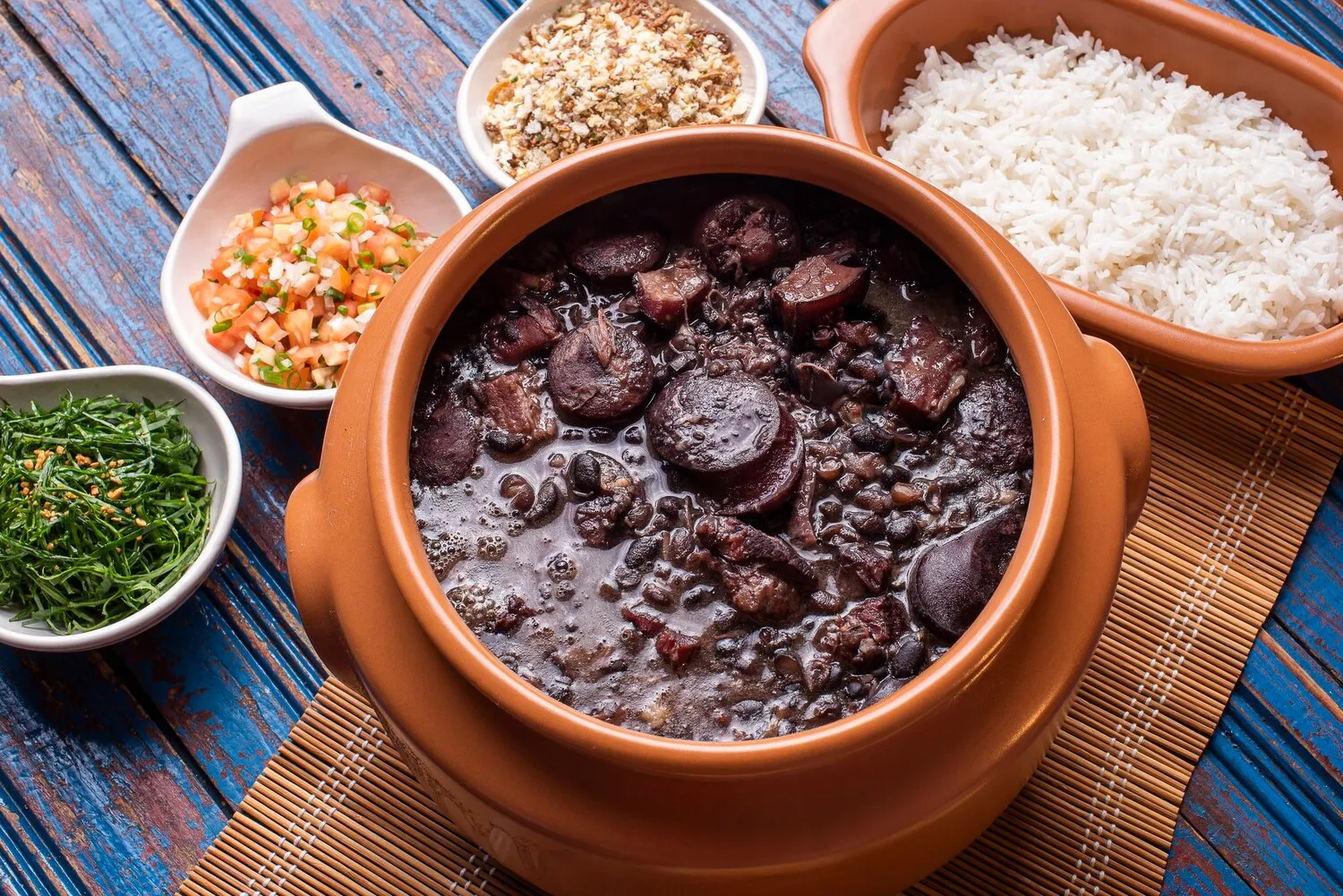
Baião de Dois
Traditional dish with rice, beans, cheese curd, and meat. A classic from the Northeast of Brazil.
Nutrition Facts
* The % Daily Value (DV) tells you how much a nutrient in a serving of food contributes to a daily diet. 2,000 calories a day is used for general nutrition advice.
Panelão do Norte - Penha SP
Baião de Dois originated in the Sertão region of Northeastern Brazil, a semi-arid area where resources were scarce. The dish reflects the resourcefulness of the people who learned to combine readily available ingredients like beans, rice, and dried meat to create a filling and nutritious meal. Indigenous, African, and European culinary influences all contributed to its creation.
Baião de Dois is deeply ingrained in the culture of Northeastern Brazil, representing the resilience and ingenuity of the region's people. It's a symbol of shared meals and community, often served during family gatherings and festivals.
Symbol of Sertão Culture
Baião de Dois embodies the spirit of the Sertão, a region known for its harsh environment and strong cultural identity. It showcases the ability to create a satisfying meal from simple ingredients, reflecting the resourcefulness and adaptability of the local population.
Family and Community
The dish is often prepared in large quantities for family gatherings and community celebrations. Sharing a plate of Baião de Dois fosters a sense of togetherness and strengthens social bonds.
Regional Variations
While the core ingredients remain consistent, regional variations exist, reflecting local preferences and available resources. Some variations may include different types of beans, meats, or spices, adding to the dish's diverse culinary landscape.
Baião de Dois is a hearty and savory dish, offering a satisfying blend of textures and tastes. The dominant flavors are earthy and smoky, with hints of saltiness and richness from the meats and cheese.
The rice provides a neutral base, while the beans contribute an earthy and slightly creamy texture. Queijo coalho (or other curd cheese) adds a salty, squeaky element that contrasts nicely with the other ingredients. The sun-dried beef (carne de sol) or jerked beef (carne seca) imparts a robust, salty, and smoky flavor that is essential to the dish. Onions, garlic, and often bell peppers add aromatic depth. Some variations may include bacon or sausage for additional flavor and richness.
Quality Ingredients Matter
Use high-quality sun-dried beef or jerked beef for the best flavor. Queijo coalho is the traditional cheese, but other firm, slightly salty cheeses can be substituted. Fresh, flavorful beans and rice are also essential.
Proper Bean Preparation
Soak the beans overnight to reduce cooking time and improve digestibility. Cook the beans until tender but not mushy, as they will continue to cook with the rice.
Layering the Flavors
Sauté the onions, garlic, and peppers before adding the meat and beans to build a flavorful base. Season generously with salt, pepper, and any other desired spices.
Moisture Control
The rice should be cooked to a slightly drier consistency than usual, as it will absorb moisture from the beans and other ingredients. Be mindful of the liquid levels to avoid a mushy final product.
Explore additional Traditional Brazilian dishes and restaurants
Explore Traditional BrazilianDiscover top dining spots and culinary experiences in Penha.
Explore PenhaLearn more about the food culture, restaurant scene, and culinary heritage of Brazil.
Explore Brazil